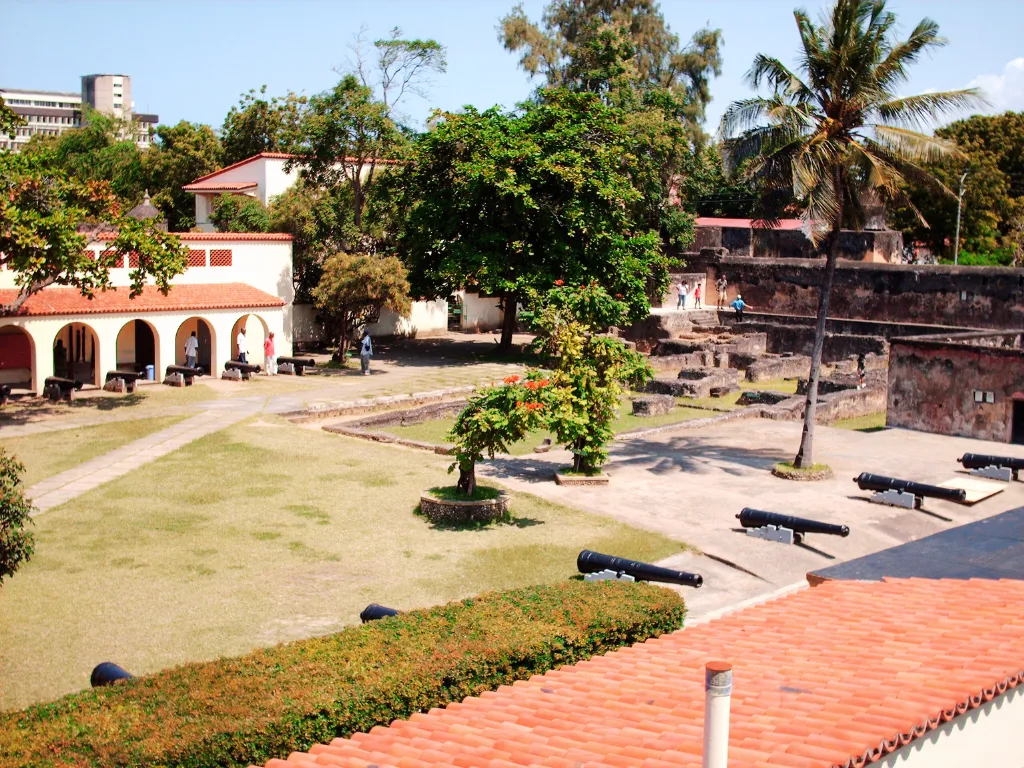

Why Visit? Fort Jesus is a UNESCO World Heritage Site perched on the edge of the Indian Ocean. Constructed by the Portuguese in 1593, it stands as one of the most well-preserved examples of 16th-century fortification in the region. Over centuries, it has witnessed multiple power struggles—Portuguese, Omani Arabs, and British—and now serves as a premier museum showcasing Mombasa’s coastal heritage and maritime history.
Explore bastions, passageways, and coral stone walls that reflect Portuguese, Arabic, and British influences.
Showcasing military relics, cannons, and historical maps
Museum galleries and excavations from Gede, Manda, Ungwana, and other coastal archaeological sites
An immersive evening presentation depicting Fort Jesus’ tumultuous past.
Portuguese Construction (1593): Designed by Italian architect Giovanni Battista Cairato, built under King Philip I of Portugal.
Omani Siege (1696–1698): Changing hands among Omani Arabs and Swahili rebels.
British Protectorate (1895): Converted into a prison during colonial rule.
National Monument (1958): Officially declared a park and later transformed into a museum in 1962.
UNESCO World Heritage Site (2011): Recognized for its unique architectural blend and historical significance.
Opening Hours: Daily, 8:00 AM – 6:00 PM (including weekends & public holidays).
Admission & Tickets: Book via eCitizen (no cash accepted). Various rates for residents, non-residents, and students.
Guided Tours: Knowledgeable guides available on-site to detail Fort Jesus’ storied past.
Accessibility: Some uneven surfaces due to the fort’s original architecture; caution is advised.
Cultural Festivals: Hosting local dances, traditional Swahili cuisine days, and celebrations of Mombasa’s heritage.
Workshops & Seminars: Collaborations with universities and historians on coastal and maritime history.
Exhibitions: Changing displays of local contemporary art and crafts in the fort’s courtyard.
Gift Shop: Coastal souvenirs, books, and postcards.
Café: Light refreshments and snacks, often with local Swahili delicacies.
Parking: Limited on-site and street parking available.
Evening Show: Check for timings of the Sound & Light presentation.
Combine Visits: Plan nearby stops like Old Town Mombasa, Mombasa Butterfly House, and local markets.
Stay Hydrated: Mombasa’s coastal climate can be hot and humid.
Step into centuries of maritime history and discover the blend of cultures that shaped the Kenyan coast at Fort Jesus Museum—where the past stands strong against time.
The National Museums of Kenya (NMK), established under the Museums and Heritage Act (2006), is a multi-disciplinary institution dedicated to collecting, preserving, researching, and presenting Kenya’s cultural and natural heritage.
Sign up to our newsletter